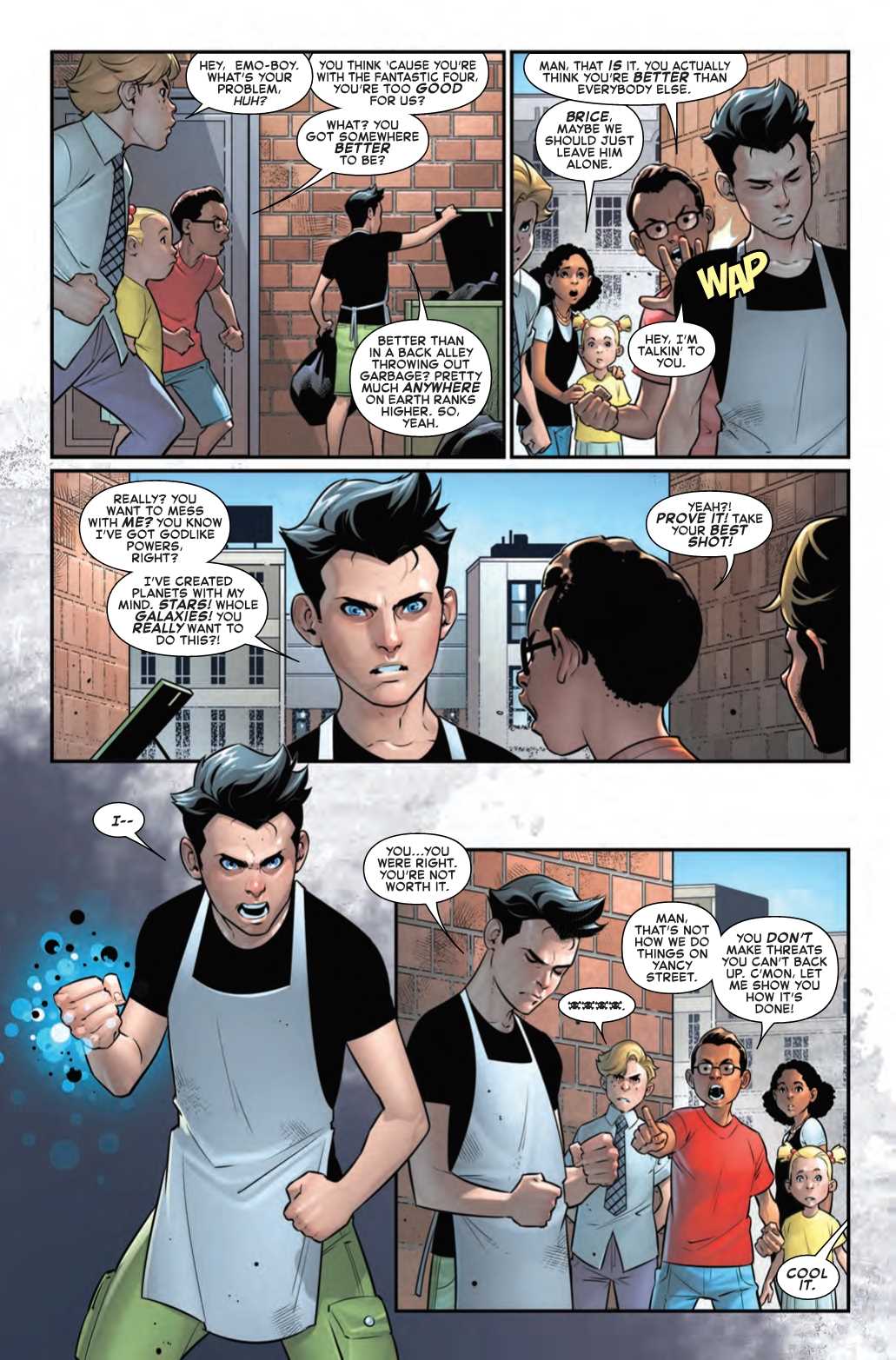Since the Fantastic Four triumphantly returned to the Marvel Universe, the iconic team has kept to itself. But Fantastic Four #10, a “War of the Realms” tie-in, thrusts Marvel’s First Family into the middle of the most dire threat Earth-616 has seen in several years.
Story by Dan Slott, art by Paco Medina with Kevin Libranda, color art by Jesus Aburtov, letters by VC’s Joe Caramagna, cover by Esad Ribić.
Reed Richards, Sue Storm, Johnny Storm and Ben Grimm have been focusing on their own adventures and the resurgence of Doctor Doom. But, with Malekith’s forces laying waste to New York City, “War of the Realms” has come to the Fantastic Four’s backyard, so they have to get involved.
Writer Dan Slott strikes a mostly effective balance between a Fantastic Four story and a useful companion to Marvel’s latest all-encompassing event. The family’s dynamics still drive the narrative along. In the aforementioned vacuum Richards and Co. have found themselves in, this tone usually works; Slott delivers down-to-Earth stories about Reed and Sue’s struggles to raise their exceptional children. Here, these predictable story beats detract from the bigger picture.
Throughout the issue, Franklin Richards seems like a stereotypical teenager. He whines when Reed makes him help out at the Grimm Youth Center. The majority of Franklin’s lines might as well be pulled from a caricature of an angsty teen. At various points, he says, “this is so unfair” and “whatever.” He also dismisses Alicia’s advice by muttering “whatever.” Plus, when an attitudinal Yancy Street resident hassles Franklin, Reed Richards’ son says, “You know I have godlike powers, right?” The characterization of Franklin Richards is problematic for a few reasons; Slott relies on tired tropes of annoying teenagers rather than diving into the heart of Franklin’s emotional turmoil.

Most of Slott’s run on Fantastic Four has been building to the possibility that Franklin might lose his powers. Every time the young hero uses his abilities, he depletes his power source. In this issue, it’s clear this impending loss weighs heavily on Franklin. His behavior ranges from bitter outbursts to somber lines about how much he values his powers. Eventually, Franklin pushes past his struggles and willingly sacrifices some of his powers in the Fantastic Four’s battle against the Frost Giants. Though this should have been an impactful moment, the payoff was lackluster because Slott makes the reader want to groan every time Franklin opens his mouth.
Improving this narrative thread could be as simple as a brief exchange between Franklin and one of his family members. It could be as easy as having Reed ask his son why he’s behaving in such a crude way. Instead, nobody acknowledges the possibility that his attitude could be caused by anything other than the idea that “teenagers will be teenagers.” As a result, Franklin is left to struggle on his own for the duration of the story.
This issue doesn’t exclusively focus on Franklin. Valeria has a confrontational meeting with Moon Girl and, while they initially don’t get along, the brilliant heroines put aside their differences and use their combined intellect to gain momentum in the battle against the Frost Giants. It’s refreshing to see these two young women play an instrumental role in the outcome of the story. The end of the issue suggests that Moon Girl might be here to stay and she’d fit right in with the Future Foundation.
Beyond the arcs of these characters, the pacing of the story is uneven. The first chunk of the issue focuses on the Fantastic Four’s return to Yancy Street after their recent adventure in Latveria. Valeria laments the lack of excitement in New York City, which seems absurd considering that the sky is always falling in Earth-616’s version of the Big Apple.

Of course, as Thor would say, all Hel quickly breaks loose, so the story shifts into an action-packed battle while it maintains its focus on Franklin’s and Valeria’s individual narratives. The resolution is disappointingly abrupt but it sets the stage for the next few issues of the series by splitting the family apart (again.) This decision will likely polarize some fans but allowing the teenagers some time to shine on their own could pay dividends to their legitimacy as individual characters.
Artists Paco Medina and Kevin Libranda capture the domesticity seen in the first portion of the issue; they both focus on the character’s facial expressions, which complements Slott’s family-focused story. In these scenes, the lack of explosive action is replaced by these emotions, and the artists’ attention to detail allows them to shine. The reader can feel Franklin’s frustration in every panel because he always looks miserable. Meanwhile, when Reed isn’t scolding his son, he looks like he’s at peace and happy to be home. These facial expressions allow the reader to pick up on some of the story’s subtext. Slott doesn’t explicitly discuss the emotions of his characters but the artists show the reader how Marvel’s First Family is feeling.
Of course, when the Frost Giants inevitably attack, Medina, Libranda and color artist Jesus Aburtov portray the devastation fantastically. The rapid shift to the creatures’ arrival features an explosion of vibrant colors that looks like the wildest rainbow imaginable. Bright shades of pink and purple clash with the monstrous Giants, which fits the story’s juxtaposition of a mostly tranquil block party and the sudden arrival of these horrifying beasts. Meduna, Libranda and Aburtov take Slott’s story to another level because the art elevates the rapid jump from the Fantastic Four’s downtime to their latest adventure as superheroes.
Fantastic Four #10 brings “War of the Realms” to the titular team’s doorstep but the story still focuses on Marvel’s First Family. The characterization of Franklin Richards makes it difficult to call this issue a success but it’s a self-contained tie-in to Marvel’s hottest event in years.
What do you think of the way Franklin Richards is portrayed in this issue? Let us know in the comments below!

